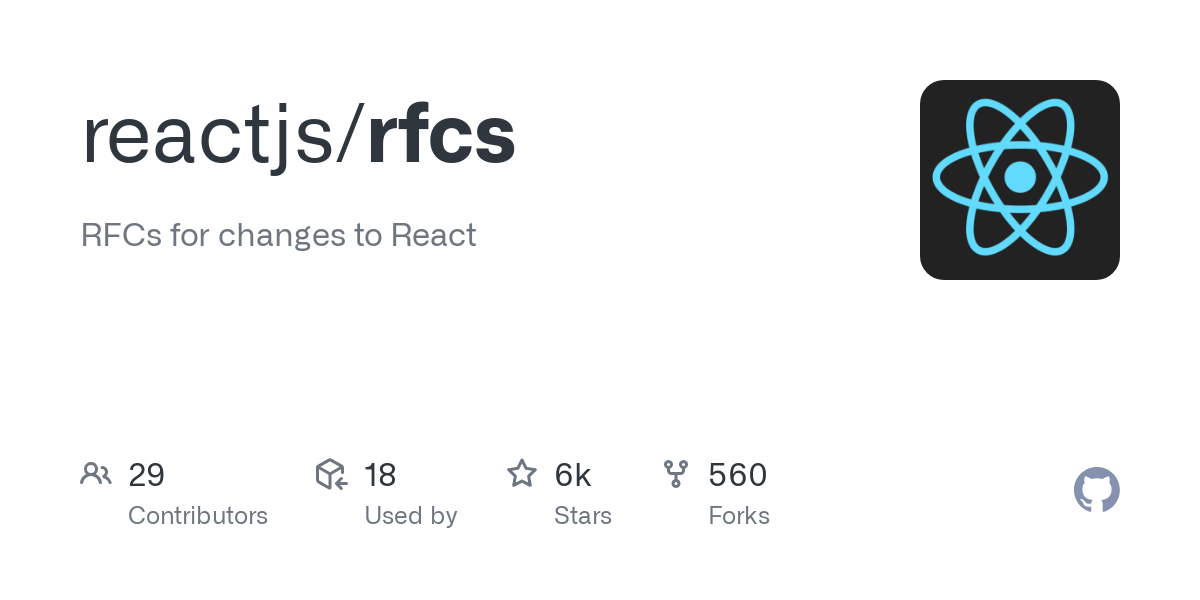React continues to evolve with robust proposals enhancing developer experience and application performance. Let’s explore interesting community proposals, highlighting their motivations and use cases, with practical examples.
Built-In Animation
Summary
Proposal for a built-in Animation component to simplify and standardize animations within React applications, such as creating dynamic transitions in interactive dashboards or implementing fluid page transitions in single-page applications. This component allows developers to implement animations declaratively, leveraging native React APIs.
Why It Matters
Currently, developers rely on third-party libraries to handle animations, which can lead to inconsistent implementations and increased dependency management overhead. A built-in solution integrates seamlessly with React's core, enhancing performance and reducing boilerplate.
Code Example
<Animation
duration={500}
fill="both"
direction={show ? "normal" : "reverse"}
keyframes={[
{ opacity: 0, transform: "translateX(0px)" },
{ opacity: 1, transform: "translateX(500px)" },
]}
>
{show && <Card />}
</Animation>The above example shows how the show state triggers an enter and exit animation for the Card component.
Key Features
- Declarative syntax for animations.
- Composability: animations can be nested for complex effects.
- Alignment with the Web Animation API.
For more information, explore the proposal here.
Inject to Stream
Summary
The injectToStream() API empowers library authors to inject chunks into React’s SSR streams, fostering better integration with SSR frameworks like Next.js and Hydrogen. For instance, it enables dynamically injecting analytics scripts or critical CSS directly into the server stream without waiting for full page hydration, improving both performance and user experience.
Why It Matters
Currently, SSR stream integration requires framework-specific implementations. This API creates a standardized way for libraries to interact with SSR streams, unlocking advanced use cases like data streaming and inline scripts.
Code Example
import { useStream } from 'react';
function StreamComponent() {
const stream = useStream();
stream?.injectToStream('<script>console.log("Streaming")</script>');
}Key Features
- Standardized SSR stream access.
- Framework-agnostic compatibility.
Learn more about the proposal here.
Slots Pattern in React
Summary
Inspired by Web Components, the Slots pattern allows more flexible and consistent composition of React components by introducing createSlot and createHost APIs.
Why It Matters
The Slots pattern bridges the gap between flexibility and consistency, making it easier to build robust design systems. For instance, a form builder can use the Slots pattern to compose customizable input fields and labels while ensuring accessibility and layout consistency. Compared to traditional composition strategies, such as using context or passing explicit props, the Slots pattern enables a more declarative approach, reducing boilerplate and enhancing readability while maintaining strict control over component structure. It enhances accessibility and enables advanced scenarios like virtualization without unnecessary re-renders.
Code Example
const TextFieldLabel = createSlot();
const TextFieldInput = createSlot();
const TextField = ({ children }) => {
return createHost(children, (slots) => (
<div>
{slots.labelSlot && <label>{slots.labelSlot.props.children}</label>}
<input {...slots.inputSlot.props} />
</div>
));
};Key Features
- Enhanced composition patterns.
- Improved accessibility handling.
- Natural integration with JSX.
Learn more about the proposal here.
Use Isolation Hook
Summary
The useIsolation hook introduces a mechanism to create isolated sub-hooks, optimizing performance by reducing unnecessary re-renders.
Why It Matters
Large-scale React applications often encounter performance bottlenecks due to excessive re-renders. For example, a live data dashboard displaying real-time analytics saw significant performance gains by isolating computations for individual widgets, ensuring that unrelated updates didn’t trigger unnecessary renders. For example, a complex dashboard with multiple widgets updating independently saw a 30% reduction in rendering time when useIsolation was applied to separate expensive calculations from unrelated updates. This demonstrates its potential to significantly optimize real-world applications. The useIsolation hook addresses this by isolating computations and hooks, ensuring better efficiency.
Code Example
const MyComponent = () => {
const isolatedValue = useIsolation(() => {
const context = useContext(MyContext);
return context.someExpensiveCalculation;
});
};Key Features
- Isolated computations within components.
- Optimized rendering for large applications.
Explore more about the hook here.
Conclusion
These proposals showcase the ongoing collaboration within the developer community, bringing fresh ideas and contributions to the future of React. Covering areas like animations, async handling, SSR optimization, and improved composition patterns, these RFCs aim to make React even more effective and developer-friendly. We invite you to explore these proposals, try out their implementations, and share your thoughts to help refine the framework. Keep an eye out as these features begin rolling out into production!














Discussion